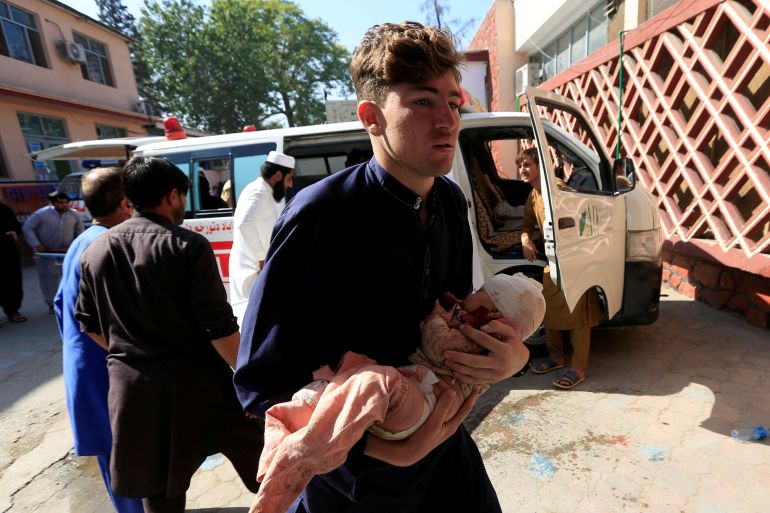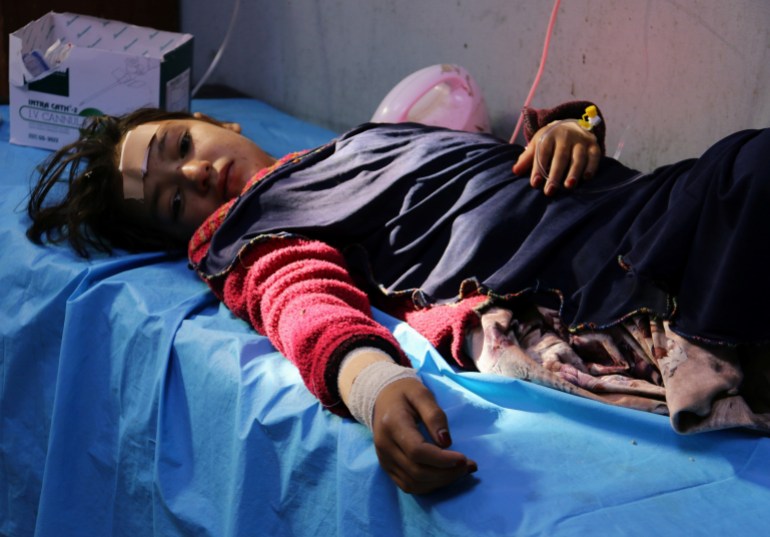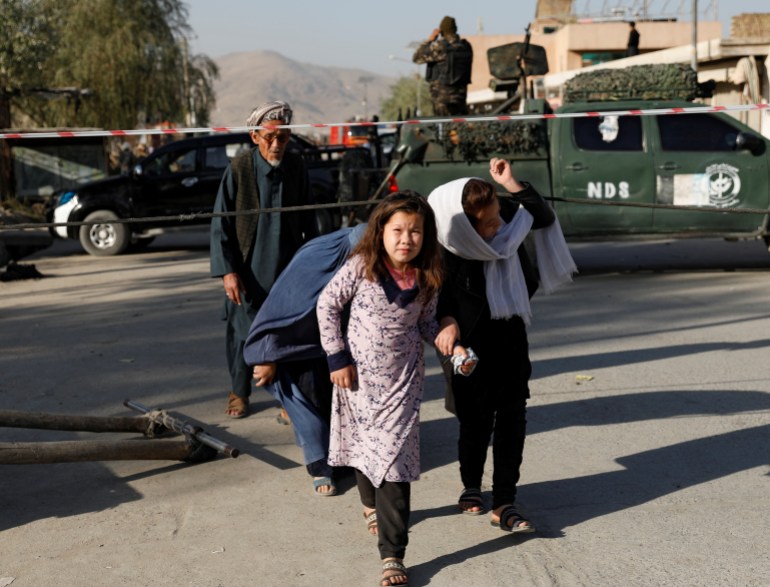Nearly 6,000 civilian casualties in Afghanistan so far this year
From January to September, 5,939 civilians – 2,117 people killed and 3,822 wounded – were casualties of the fighting, the UN says.

Nearly 6,000 Afghan civilians were killed or wounded in the first nine months of the year as heavy fighting between government forces and Taliban fighters rages on despite efforts to find peace, the United Nations has said.
From January to September, there were 5,939 civilian casualties in the fighting – 2,117 people killed and 3,822 wounded, the UN Assistance Mission in Afghanistan (UNAMA) said in a quarterly report on Tuesday.
Keep reading
list of 3 itemsTrump says US troops in Afghanistan should be ‘home by Christmas’
As violence flares in south Afghanistan, key questions answered
“High levels of violence continue with a devastating impact on civilians, with Afghanistan remaining among the deadliest places in the world to be a civilian,” the report said.
Civilian casualties were 30 percent lower than in the same period last year but UNAMA said violence has failed to slow since the beginning of talks between government negotiators and the Taliban that began in Qatar’s capital, Doha, last month.

The Taliban was responsible for 45 percent of civilian casualties while government troops caused 23 percent, it said. United States-led international forces were responsible for two percent.
Most of the remainder occurred in crossfire, or were caused by ISIL (ISIS) or “undetermined” anti-government or pro-government elements, according to the report.
Ground fighting caused the most casualties followed by suicide and roadside bomb attacks, targeted killings by the Taliban and air raids by Afghan troops, the UN mission said.
Fighting has sharply increased in several parts of the country in recent weeks as government negotiators and the Taliban have failed to make progress in the peace talks.

The Taliban has been fighting the Afghan government since it was toppled from power in a US-led invasion in 2001.
Washington blamed the then-Taliban rulers for harbouring al-Qaeda leaders, including Osama bin Laden. Al-Qaeda was accused of plotting the 9/11 attacks.
Calls for urgent reduction of violence
Meanwhile, the US envoy for Afghanistan, Zalmay Khalilzad, said on Tuesday that the level of violence in the country was still too high and the Kabul government and Taliban fighters must work harder towards forging a ceasefire at the Doha talks.
Khalilzad made the comments before heading to the Qatari capital to hold meetings with the two sides.
“I return to the region disappointed that despite commitments to lower violence, it has not happened. The window to achieve a political settlement will not stay open forever,” he said in a tweet.
There needs to be “an agreement on a reduction of violence leading to a permanent and comprehensive ceasefire”, added Khalilzad.
1/4 I return to the region disappointed that despite commitments to lower violence, it has not happened. The window to achieve a political settlement will not stay open forever. https://t.co/hVl4b032W6
— U.S. Special Representative Zalmay Khalilzad (@US4AfghanPeace) October 27, 2020
A deal in February between the US and the Taliban paved the way for foreign forces to leave Afghanistan by May 2021 in exchange for counterterrorism guarantees from the Taliban, which agreed to sit with the Afghan government to negotiate a permanent ceasefire and a power-sharing formula.
But progress at the intra-Afghan talks has been slow since their start in mid-September and diplomats and officials have warned that rising violence back home is sapping trust.